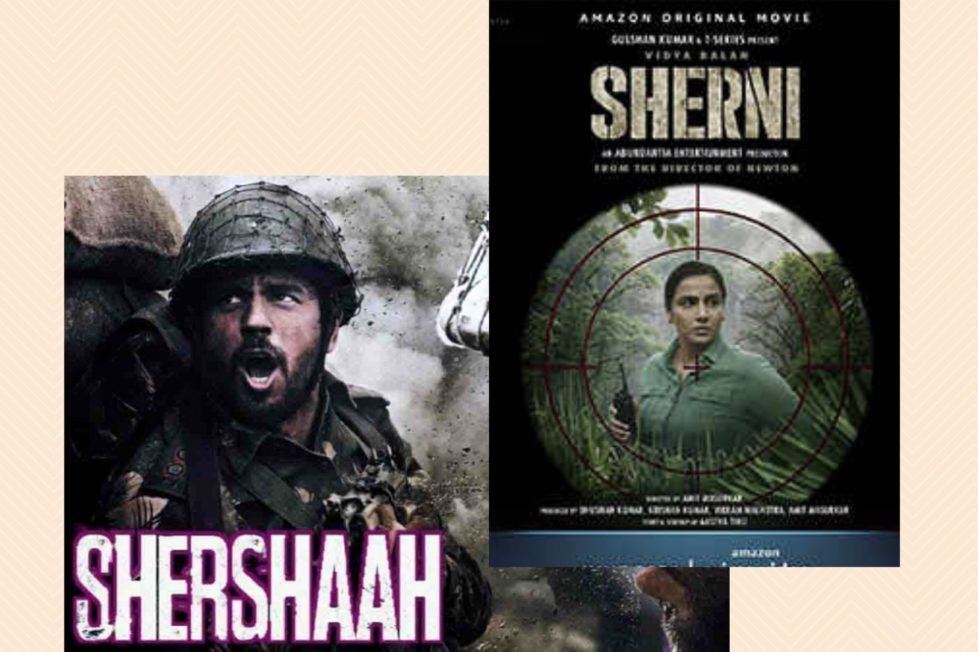Shershah & Sherni – Film Reviews


Sherhah gets 7/10. Three points taken off for Karan Johar’s plastic-Botox girlfriend with uneven eyebrows who was totally unnecessary in the film.
Sherni gets 5/10. A forgiving score for a necessary film which tried to be too woke with showing main leads as minorities – Vincent and Noorani while showing Hindus as matlabi, superstitious and political lot.
Siddharth Malhotra is the new Vicky. Not his character Vicky in the film, but the new Vicky Kaushal. Kaushal’s career was over the moment he started dating that j!hadi aunty with the fake name Katrina. His career rightfully ended as a Bhoot. All puns intended.
Siddharth does justice to the character which shows enough depth needed to convey the story. His desh bhakti is believable and the development of the character via his family and interactions with his brother-in-law and his army colleagues is commendable. Siddharth seems to shed his good boy image and graduates as the Student of the Year and makes the right choice by joining the army. His interactions with his juniors in the reserve forces seems genuine though the human aspects like smoking and being buddy-buddy with local Kashmiris seemed a bit fake. This was pointed out by his army superiors and should have served as a humbling point. I wonder if the real Shershah was chummy-chummy with the locals during his time in service.
One of the best parts of the film is seeing the Pakistanis getting pummeled by the Indian army. Every Indian probably felt high level moments of pride when the Indian side shows the Pakis who is boss. The comment about Madhuri Dixit served as humor which cuts through a heavy situation. The ironic part is that Madhuri was probably dating the j!hadi Sanjay Dutt at the time anyway.
The only and major distraction and unnecessary part was 40 odd minutes with Kiara Advani on screen. The movie flowed much better when one fast forwards the idiotic, time-pass parts with the couple and their bad, romantic acting. It was not believable by any stretch. In fact, they look like a brother-sister duo in many scenes. The chemistry is negative; Kiara might as well have played Siddharth’s sister in the film.
Kiara’s fake whitened teeth are something of concern. She looks like her teeth were brown-yellow prior to the fake bleaching, and this might be due to a condition like bulimia. This is speculation of course, but such things are of concern in young women and not just a physical body issue but a mental issue as well.
Vidya Balan is at her best. Though one cannot forget the real life Urban Naxal that she is. Irrespective of her personal ideology, she is a good actor and we get to experience that in the brilliant film Sherni. Vijay Raaz depicts Modi ji’s Muslim poster boy success story; ek haath mei computer aur ek haath me DNA kit. Raaz keeps the momentum going and depicts dharmic principles of Hindu Oneness better than any other character in the film, except for maybe a handful of the village-tribal folks.
The message of environment vs. development is extremely important in a place like India which is a democracy in essence but the policies and politics about conversation are at odds with each other given dharmic ecological principles and the remnants of the Raj and their attitudes towards hunting and conservation. India has a history of preserving trees and wildlife, i.e. Chipkoo movement, etc.
Why did the director and producer come up with the name Vidya Vincent? Why was a Chrisitan shown as the lead who gives a crap while the impediments to conservation are from Hindu politicians and inept administrator-boss. And why was the only sane guy who believed in science was shown to be Muslim? This cannot be a coincidence; this was done on purpose to malign the majority which still makes up Bharat. The movie otherwise is so well made that it is easy to forget the big anti-Hindu move in the film but I am sure this aspect lingers in the minds of people, even if on a subconscious level.
Vidya’s husband serves as the clueless public which most Indians can probably relate to. The overzealous mother and mother-in-law are good actors and play their parts well. The character Pintu does his part as the evil, masculine representation of a colonized human being who is hell-bent on hunting a Sherni.
The film ends with a poignant message about conservation and the roles tribals and village-tribal-van people have to play in preserving the oneness which is inherent in Bhartiya society. The film is worth a watch regardless of its uber woke and falsely and forcefully inclusive pitfalls.
DISCLAIMER: The author is solely responsible for the views expressed in this article. The author carries the responsibility for citing and/or licensing of images utilized within the text.
